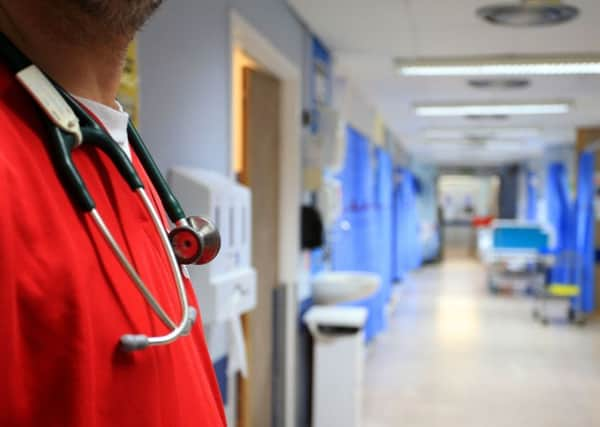How stroke services may change across South Tyneside


Option one:
From Sunderland, run inpatient hyperacute and acute stroke care, hospital-based rehabilitation on specialist stroke ward and local community stroke teams
From South Tyneside, run local community stroke teams.
Impact:
This option would deliver the greatest clinical improvements
It would fund more therapy staff to improve recovery.
Advertisement
Hide AdAdvertisement
Hide AdIt would be a more appealing working arrangement to help recruit medical staff.
Local clinics for people who have a mini stroke (TIA) would be at both hospital sites.
Visitors of 240-300 South Tyneside patients each year (less than 1% of the population) will experience additional travel.
£510,000 savings would be possible.
Option two:
From Sunderland, Inpatient hyperacute and acute stroke care, hospital-based rehabilitation on specialist stroke ward, and after seven days, South Tyneside patients can be moved to STDH and run local community stroke teams.
Advertisement
Hide AdAdvertisement
Hide AdFrom South Tyneside, run hospital-based rehabilitation on specialist stroke ward and local community stroke teams.
Impact:
Working arrangements would be less appealing to staff.
Would still present difficulties in ensuring adequate doctor cover.
TIA clinics would be available at Sunderland Royal Hospital as there would not be enough medical staff to provide clinics at both hospitals
Visitors of 240-300 South Tyneside patients will experience additional travel for seven days.
Advertisement
Hide AdAdvertisement
Hide AdNo savings would be made to invest in more clinical improvements.
This would require an additional investment of £431,000.
Option three:
From Sunderland, Inpatient hyperacute and acute stroke care, hospital-based rehabilitation on specialist stroke ward, and after three days, South Tyneside patients can be moved to STDH and run local community stroke teams.
From South Tyneside, run acute stroke care, hospital-based rehabilitation on specialist stroke ward and local community stroke teams.
Impact: Working arrangements would be less appealing to staff.
Advertisement
Hide AdAdvertisement
Hide AdWould still present difficulties in ensuring adequate doctor cover.
TIA clinics would be available at Sunderland Royal Hospital as there would not be enough medical staff to provide clinics at both hospitals.
Visitors of 240-300 South Tyneside patients will experience additional travel for three days.
No savings would be made to invest in more clinical improvements.
This would require an additional investment of £431,000.
Advertisement
Hide AdAdvertisement
Hide AdHyperacute and acute stroke care could be rolled into one unit based in Sunderland, where patients would be given hospital-based rehab there before being discharged to community teams.
The other options also involve that, but would see South Tynesiders discharged after seven or three days to the nearby hospital before they are then passed on to the community teams.
Stroke services have already been “temporarily” moved from South Tyneside to the city and it says it is monitoring outcomes, but expects those who have had a stroke to experience shorter stays in hospital than under the previous arrangement.
Clinicians have said they are able to provide better care this way because they can be assessed by a senior stroke doctor sooner and given clot-busting drugs faster, which helps in a quicker recovery.
Advertisement
Hide AdAdvertisement
Hide AdHospital staff have told NHS bosses they prefer the option which would see patients remain in hospital in Sunderland following an attack.
The service says in consultation with its workers, they backed the first option as it “offered the best opportunity to improve the quality of services” across the borough and Sunderland.
It suggests it will have “the most positive impact on health outcomes.”
The report states that would ensure patients would be admitted more quickly, see more input from senior medical staff, improve the staff-to-patient ratio, allow savings to be made and continue the transient ischaemic attack or mini stroke clinics to run at STDH.
Advertisement
Hide AdAdvertisement
Hide AdIt says options two and three scored negatively because they would not deliver levels of specialist staff needed for a high-quality service without significant investment.
Both would need £431,000 more to run, compared to a £510,000 saving through option one, with up to 300 South Tyneside visitors to face three days of travel to see the patient.
Option one was found to have “minor drawbacks” in regards to commuting between the two areas.
However, it says picking that scenario would allow to address staffing concerns and deliver a 24/7 service and help it recruit consultants because of the more attractive working patterns with fewer on-call commitments outside usual working hours.